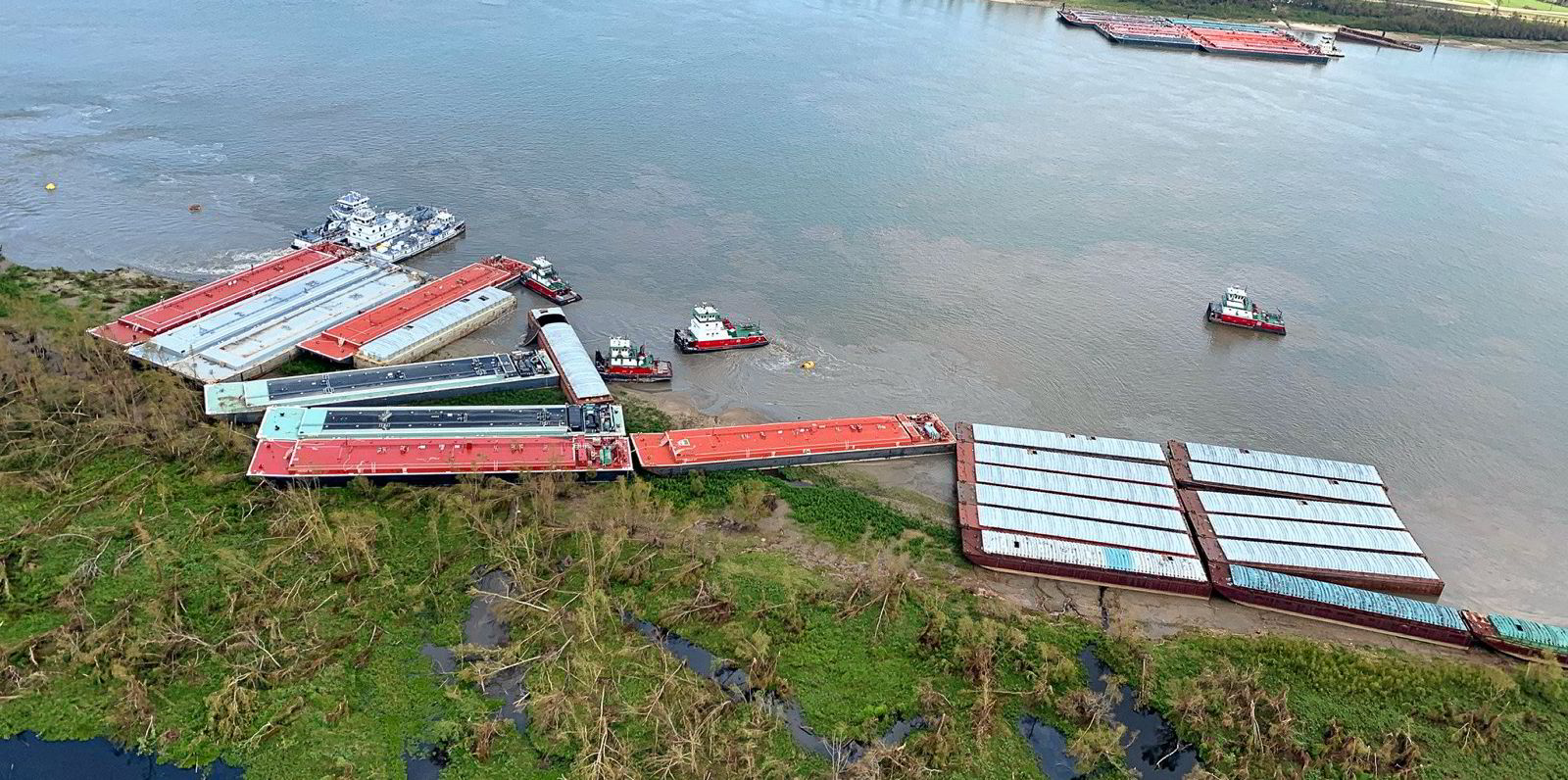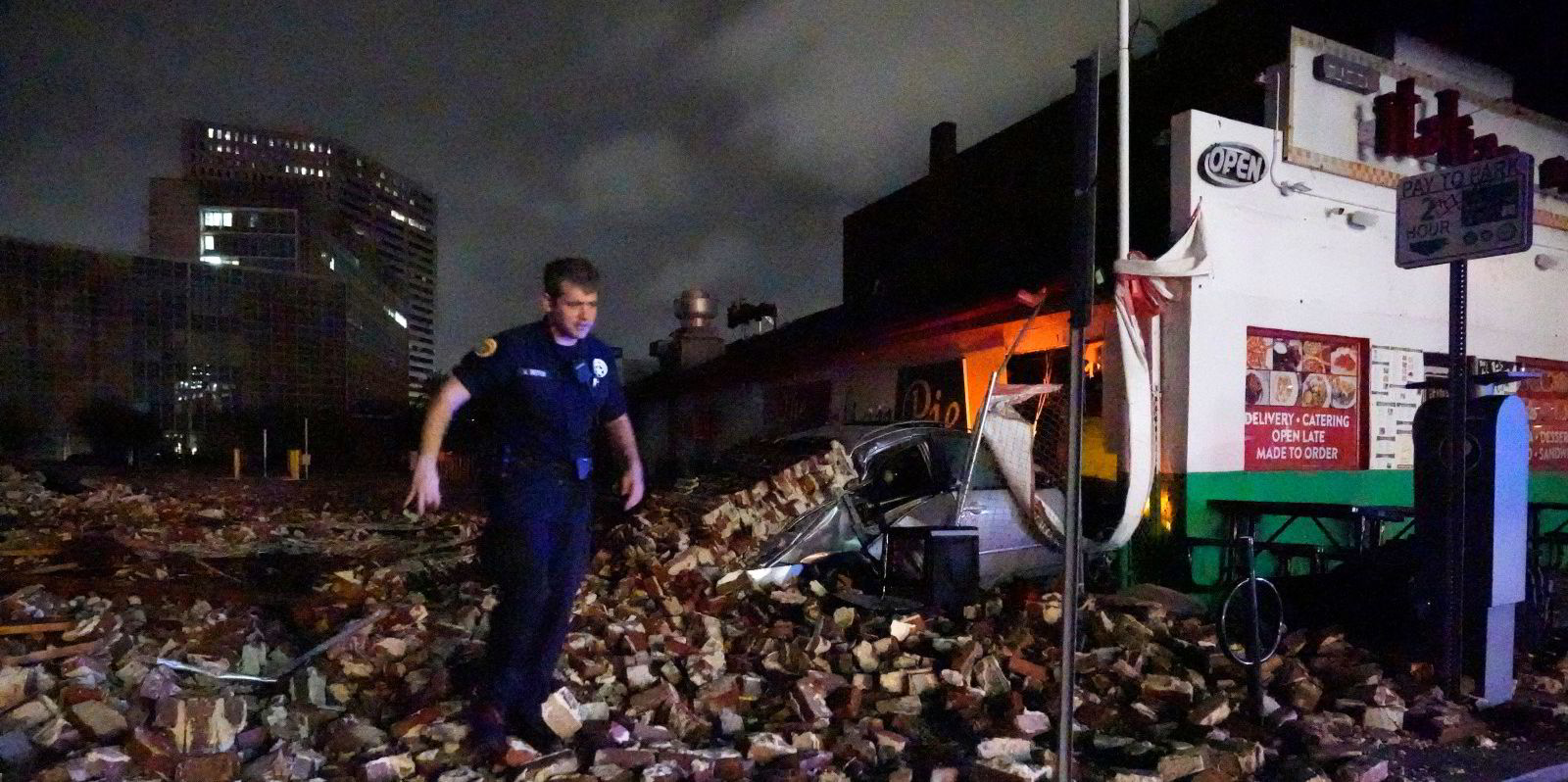A week after Hurricane Ida made landfall off New Orleans, the local tanker and bulker markets are still struggling to restore operations.
Over the weekend, the US Coast Guard (USCG) reopened the Lower Mississippi River to all vessel traffic in New Orleans and key ports throughout south-eastern Louisiana.
The waterway has been deemed open for all marine traffic after the removal of several power lines obstructing it due to a downed transmission tower, and a survey of the ship channel in key areas of concern.
“Working alongside key federal, state, parish, city and maritime industry leaders, we’ve made significant progress reconstituting ports and waterways throughout south-east Louisiana,” said the USCG captain-of-the-port, New Orleans, Captain Will Watson.
“The marine transportation system in this region connects our heartland’s harvest with global markets and provides vital energy supply to our nation.”
The USCG said it continues to “work with its partners” to reconstitute ports and waterways throughout south-eastern Louisiana to pre-storm capacity, including Port Fourchon, Bayou Lafourche, Houma Navigation Canal and key points along the Gulf Intracoastal Waterway.
Vessel movement and cargo operations are authorised, but with a number of restrictions including speed and tow sizes.
Speed restrictions
The USCG said vessels operating on the Lower Mississippi from mile marker 108 to 167.5 also need to sail as close to the centreline of the channel as possible.
“Vessel operators are reminded there may be sunken or partially sunken obstructions near the right or left descending banks and should use caution when transiting these areas,” it warned.
Deep-draft vessels operating on the Lower Mississippi are restricted to daylight transit only, while mariners have been advised to exercise caution while transiting from mile marker 56 to 58 due to a large field of partly sunken barges along the right descending bank.
Hurricane Ida caused historic US crude supply chain disruptions, having a significant impact on Louisiana refinery operations and Gulf of Mexico production.
“We expect Ida to be bearish for MRs in the West,” Braemar ACM said in an update last week.
“Louisiana exports about 700,000 barrels per day of [clean petroleum products] and nearly half of the refining capacity in the state was hit by Ida.”
Braemar ACM said that represents about one-fourth of US Gulf refining capacity and refiners hit by Ida could be offline for up to 10 days or longer.
On the positive side, the shipbroker said Ida will be bullish for aframaxes because of the rising need to export crude no longer consumed by Louisiana’s refiners and because production in the Gulf of Mexico is likely to recover sooner than refining will.
Oil prices fell on Friday, with Brent crude futures lower by $0.42 at $72.61 a barrel, while US West Texas Intermediate crude futures were down $0.70 at $69.29.





